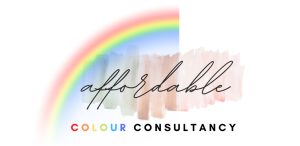
In a world awash with an infinite spectrum of colors, the role of a Color Consultant emerges as a guiding beacon, harmonizing hues and shades to create visually captivating and emotionally resonant environments. The task of a Color Consultant transcends the ordinary to become an alchemical blend of artistry, psychology, and technical expertise. This exploration delves into the multifaceted realm of a Color Consultant, illuminating their pivotal role in shaping our sensory experiences, influencing emotions, and transforming spaces into captivating works of visual poetry.
A Symphony of Visual Perception:
The fundamental responsibility of a Color Consultant revolves around the orchestration of colors in a given space, be it residential, commercial, or public. They wield an astute understanding of the principles of color theory, leveraging their expertise to evoke specific emotions, establish moods, and amplify spatial aesthetics. Each color possesses its unique language, and a Color Consultant serves as a translator, ensuring that the chosen palette speaks the intended visual narrative.
The science of color perception is deeply rooted in psychology. A Color Consultant harnesses this understanding to create environments that resonate with occupants on a subconscious level. Warm tones elicit feelings of comfort and coziness, while cool shades evoke tranquility and serenity. By manipulating color, a skilled consultant can alter perceptions of space, making rooms appear larger, cozier, or more dynamic, thereby influencing how individuals interact with and experience their surroundings.
Navigating the Palette:
A Color Consultant is akin to a maestro with an intricate palette of pigments. They skillfully navigate the vast array of color options, considering not only personal preferences but also the broader context and purpose of the space. Factors such as lighting conditions, architectural elements, and the flow between different areas all play a pivotal role in the selection process.
A residential Color Consultant collaborates closely with homeowners to understand their lifestyle, preferences, and aspirations. They decipher the nuances of individual personalities and translate them into a harmonious color palette that reflects the occupants’ essence. For commercial spaces, a Color Consultant works hand in hand with business owners, aligning color choices with brand identity, corporate values, and the intended customer experience.
Technical Mastery:
The role of a Color Consultant extends beyond mere aesthetics. They possess a profound understanding of how colors interact with light and space, ensuring that the final composition translates seamlessly from vision to reality. Technical expertise comes into play when accounting for factors such as lighting conditions, natural vs. artificial light sources, and the interplay between adjacent surfaces. A Color Consultant must possess a nuanced understanding of color undertones and how they can be influenced by surrounding elements.
Technology has become an indispensable tool for modern Color Consultants. They employ digital software and visualization tools to simulate how different colors will appear in a given space under various lighting conditions. This enables clients to make informed decisions and visualize the end result before committing to a particular color scheme.
Cultural Context and Trends:
A Color Consultant operates at the nexus of cultural context and contemporary trends. They understand the cultural connotations associated with specific colors and tailor their recommendations accordingly. For instance, certain colors may carry religious or symbolic significance, and a skilled consultant is attuned to these subtleties.
Moreover, staying abreast of color trends is an essential aspect of the consultant’s role. They continuously research and analyze prevailing color trends, ensuring that their recommendations remain relevant and in tune with evolving sensibilities. This proactive approach enables them to infuse spaces with a timeless yet modern allure, satisfying both aesthetic and cultural sensibilities.
Collaboration and Communication:
The journey of a Color Consultant is characterized by collaboration and effective communication. They work closely with architects, interior designers, homeowners, and business proprietors to ensure that the chosen color palette seamlessly integrates with the overall design vision. Clear communication is paramount in conveying the reasoning behind color choices, helping clients understand how colors will interact and impact the ambiance of a space.
Furthermore, a Color Consultant serves as an educator, enlightening clients about the psychology of color and the transformative potential it holds. They empower individuals to make informed decisions, fostering a deeper appreciation for the profound influence of color on human perception and emotion.
Conclusion:
In a world where color is both an artistic expression and a conduit for emotional resonance, the role of a Color Consultant takes center stage. Their mastery of color theory, psychology, technical application, and trend analysis makes them custodians of visual harmony and emotional equilibrium. Guided by their expertise, spaces come alive with narratives, moods, and experiences carefully woven from the threads of color.
The role of a Color Consultant isn’t confined to mere aesthetics; it is a symphony of senses that orchestrates an intricate dance between color, light, form, and emotion. As we navigate the kaleidoscopic realm of human experience, the Color Consultant remains an ever-present guide, illuminating our spaces and enriching our lives with the poetry of color.
